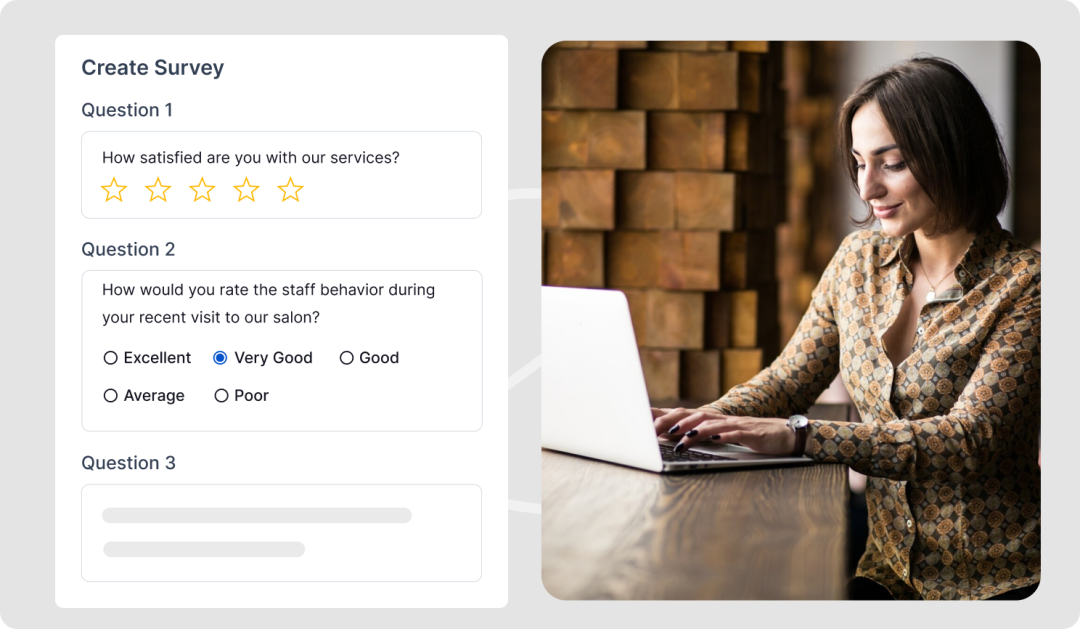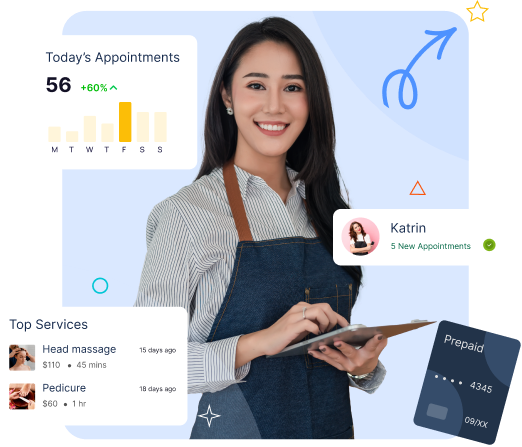How to Create a Salon Customer Feedback Form?
Introduction

Gathering customer feedback is crucial for salons to understand their clients’ needs, improve services, and build stronger relationships. A well-designed feedback form can provide valuable insights. In this article, we will explore the different types of feedback questions, dynamic and context-based questions, compare various feedback form types, provide examples, and discuss how MioSalon automates the feedback survey process.
Types of Feedback Questions
Feedback forms can include various question types such as rating scales, multiple choice, open-ended text, and more. Each question type offers a unique way to collect specific information and allows for diverse responses.
Dynamic Questions and Conditional Branching
Dynamic questions, also known as conditional questions, offer a personalized survey experience. The next question in the form is selected based on the answer given in the previous question. This branching logic ensures that respondents receive relevant questions based on their previous responses. This feature is aimed at controlling and tackling negative feedback.
Context-Based Questions
Context-based questions relate to specific services or experiences that the customer has encountered. This type of question allows salons to gather feedback that is directly linked to a particular service, ensuring focused insights for targeted improvements.
Comparison of Feedback Form Types
- Simple Feedback Form: A straightforward form with standard questions. Suitable for general feedback and overall satisfaction ratings.
- Dynamic Conditional Feedback Form: Offers a personalized experience by adapting questions based on previous responses. Ideal for in-depth feedback and detailed insights.
- Contextful Feedback Form: Tailored to specific services or experiences, providing targeted feedback. Helpful for analyzing feedback against specific salon offerings and the stylist.
Examples of Feedback Forms
- Simple Feedback Form:
- Rating: How satisfied were you with our services? (1-5 scale)
- Open-ended: What did you like most about your experience?
- Dynamic Conditional Feedback Form:
- Rating: How satisfied were you with the hairstylist’s expertise? (1-5 scale)
- Conditional: If rating < 4, What could we improve in terms of hairstyling?
- Contextful Feedback Form:
- Service-specific: How satisfied were you with your hair coloring service? (1-5 scale)
- Open-ended: Is there anything specific you appreciated about the coloring process?
Automating Feedback Surveys with MioSalon
MioSalon offers an automated feedback survey module that simplifies the process of collecting and analyzing customer feedback. The software enables salons to create customized feedback forms, schedule automated survey requests via SMS or email immediately after the appointments, and receive instant notifications for responses.
Best Practices in Creating Feedback Forms
- Keep the form concise and easy to understand.
- Use a mix of question types to gather different insights.
- Prioritize closed-ended questions for quantifiable data.
- Include open-ended questions for qualitative feedback.
- Consider the customer journey and ask context-based questions.
Feedback Metrics to Monitor
- Key metrics to track include
- customer satisfaction ratings,
- average ratings for different services,
- feedback sentiment analysis,
- response rates
- specific areas for improvement identified through customer comments.
Try MioSalon Feedback Form
Experience the benefits of MioSalon automated feedback form by signing up for a trial. Collect valuable insights, enhance customer satisfaction, and drive business growth.
Conclusion
Creating an effective salon customer feedback form is essential for understanding client needs, improving services, and fostering loyalty. By utilizing different question types, dynamic branching, and context-based questions, salons can gather actionable feedback. With MioSalon automation capabilities, the feedback survey process becomes seamless, enabling salons to unlock valuable insights and make data-driven improvements to enhance customer experiences.



